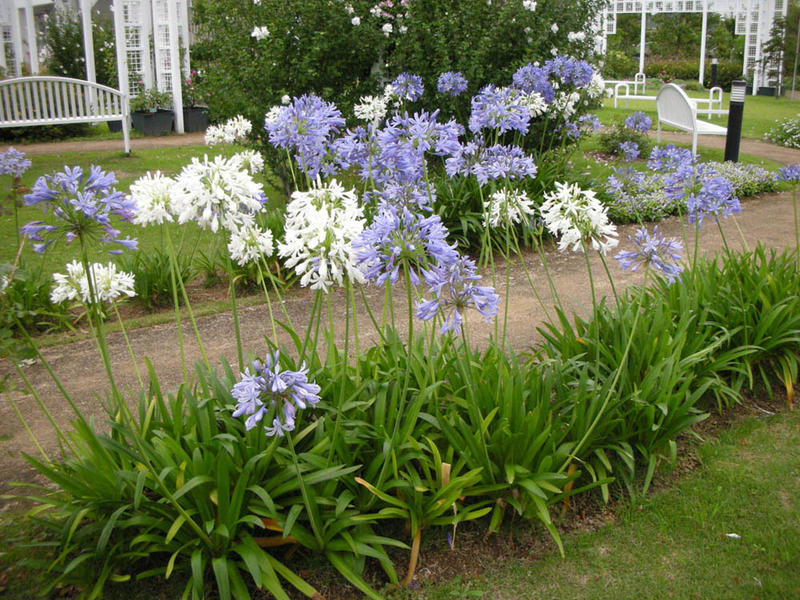Understanding the Art of Agapanthus Treatment: Essential Actions for Healthy Development and Vivid Blooms
In the realm of horticulture, the growing of agapanthus stands as a rewarding endeavor for those who look for to nurture these classy blooming plants. From picking the appropriate range to grasping trimming techniques, the trip in the direction of cultivating growing agapanthus plants is diverse and holds the crucial to unlocking the complete potential of these organic gems.

Selecting the Right Agapanthus Variety

When picking the ideal Agapanthus range for your yard, think about factors such as climate viability, flower shade, and growth practice. Agapanthus, frequently called Lily of the Nile or African lily, comes in a range of shades ranging from tones of purple and blue to white. Select a blossom color that enhances your existing garden palette to create a harmonious landscape. Additionally, consider the environment in your area to guarantee the Agapanthus selection you pick can thrive in your specific problems. Some varieties are a lot more forgiving of cold temperature levels, while others prefer warmer climates. Understanding the development practice of various Agapanthus ranges is critical for correct positioning within your yard. Some varieties have a clumping development habit, suitable for borders or containers, while others have a more spreading nature, appropriate for ground cover or mass plantings. By meticulously reviewing these variables, you can select the ideal Agapanthus variety to improve the charm of your garden.
Ideal Growing Conditions
Taking into consideration the ideal environmental demands is vital for successful Agapanthus growing. Agapanthus flourishes in well-draining dirt with a slightly acidic to neutral pH degree. When planting, select an area that receives complete sunshine to partial shade. In hotter environments, offering some afternoon color can prevent scorching of the leaves. Agapanthus plants are delicate to cool temperature levels and must be shielded from frost throughout wintertime months.
To guarantee healthy growth and lively blossoms, plant Agapanthus light bulbs at a deepness of regarding 2-4 inches and room them 8-12 inches apart. Adding raw material, such as garden compost, to the dirt can boost water drainage and fertility, promoting durable origin growth. Mulching around the base of the plants helps preserve moisture and suppresses weed growth. Routine watering is critical, specifically throughout the expanding period, to maintain the dirt continually wet yet not waterlogged.
Watering and Feeding Tips
Keeping appropriate dampness levels and offering important nutrients are essential elements in the care program for Agapanthus plants. When it pertains to watering Agapanthus, it is essential my explanation to strike an equilibrium. These plants prefer constantly wet dirt however are susceptible to root rot if overwatered. During the growing period, water deeply as soon as a week, making sure the soil is well-draining to stop waterlogging. In hotter environments or during durations of drought, more frequent watering might be necessary to maintain the dirt uniformly wet. Nevertheless, minimize watering in the wintertime to avoid water logged conditions.
Fertilizing Agapanthus is necessary for promoting healthy and balanced growth and respected flowers. Use a well balanced fertilizer, such as a 10-10-10 formula, in the very early springtime as new development arises. Repeat this application every 6-8 weeks throughout the expanding season. Prevent excessive fertilizing, as it can bring about lush foliage at the expense of blossoms. Always comply with the producer's directions for proper dilution and application methods. By adhering find more to these watering and fertilizing ideas, you can ensure your Agapanthus plants thrive and create vivid, resilient blooms.
Trimming Methods for Agapanthus
Pruning Agapanthus plants at the suitable times and with appropriate strategies is important for preserving their health and wellness and advertising optimum growth and flowering. The perfect time to prune Agapanthus remains in late winter months or early springtime before new growth emerges. Start by getting rid of any type of dead or yellowing fallen leaves near the base of the plant. Cut them as short as feasible without harming the emerging shoots.
Deadheading invested flowers can additionally reroute the plant's power into producing more flowers instead than setting seeds. If you want to collect seeds for proliferation, leave some flowers to mature and dry on the plant.
Bear in mind to use tidy, sharp tools to make specific cuts and lower the danger of introducing diseases. Agapanthus. Routine pruning will certainly help maintain your Agapanthus looking Bonuses healthy and balanced and neat while ensuring a bountiful display of attractive blooms
Managing Usual Parasites and Diseases
After ensuring proper pruning methods for Agapanthus, it is crucial to attend to common insects and diseases that can affect the health and vigor of these plants. One common insect that impacts Agapanthus is the Agapanthus gall midget.
Furthermore, Agapanthus plants can endure from root rot if they are planted in improperly draining dirt. By being attentive and taking punctual action against pests and diseases, you can aid your Agapanthus plants flourish and create dynamic blossoms. Agapanthus.

Verdict
In final thought, grasping the art of agapanthus care entails picking the right range, offering excellent growing problems, proper watering and fertilizing, appropriate pruning methods, and addressing common pests and illness. By following these important actions, you can make certain healthy and balanced growth and vibrant flowers for your agapanthus plants. Remember to consistently check and maintain your plants to advertise their overall wellness and long life.
To make certain healthy and balanced growth and vibrant flowers, plant Agapanthus light bulbs at a depth of about 2-4 inches and space them 8-12 inches apart. By adhering to these watering and fertilizing tips, you can ensure your Agapanthus plants prosper and produce vivid, resilient flowers.
One usual insect that impacts Agapanthus is the Agapanthus gall midget. Additionally, Agapanthus plants can suffer from root rot if they are planted in improperly draining dirt. By following these essential actions, you can make sure healthy growth and lively blossoms for your agapanthus plants.